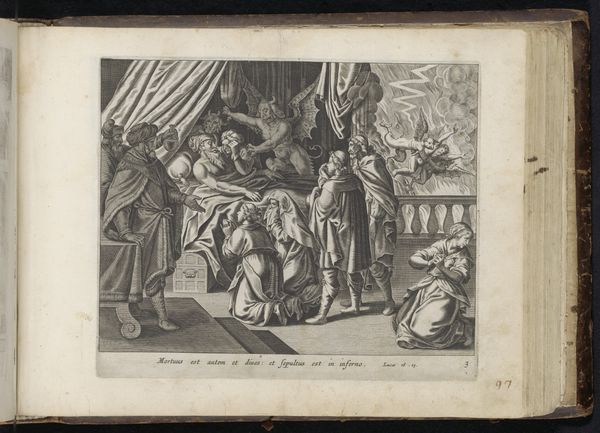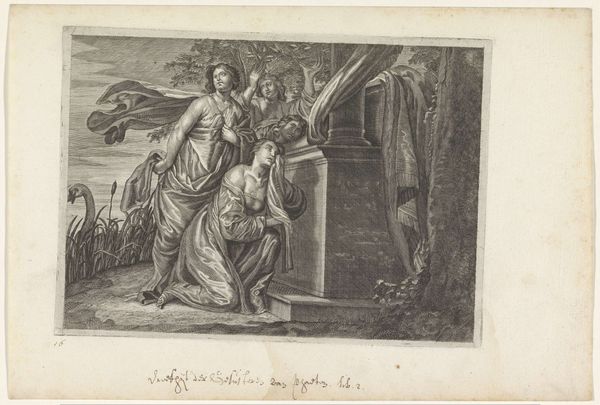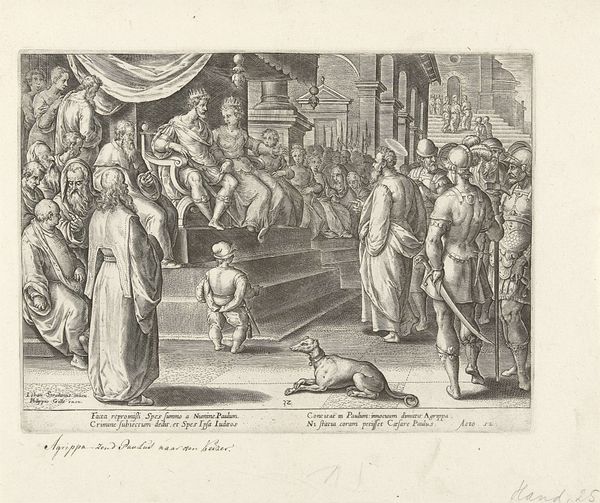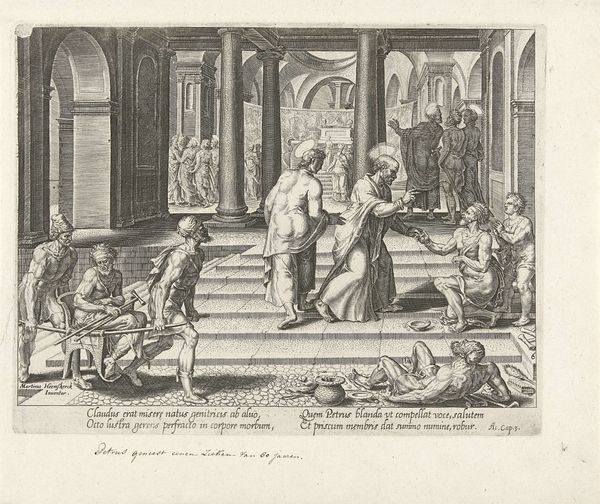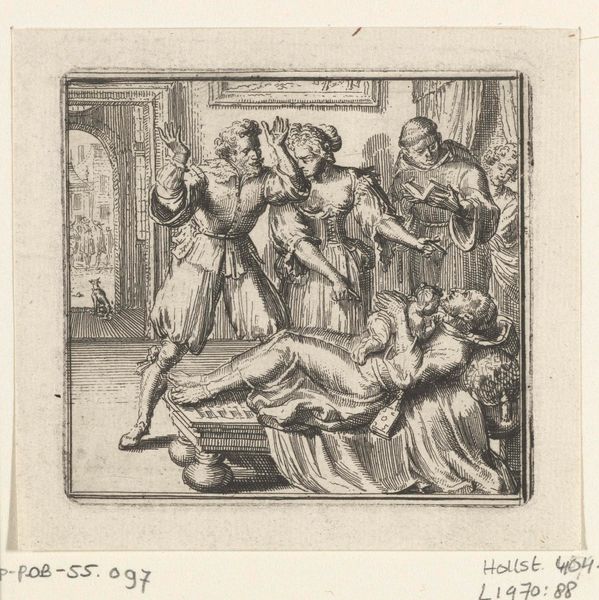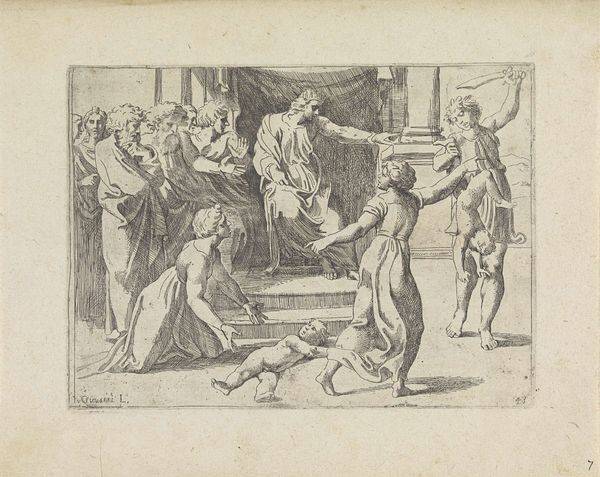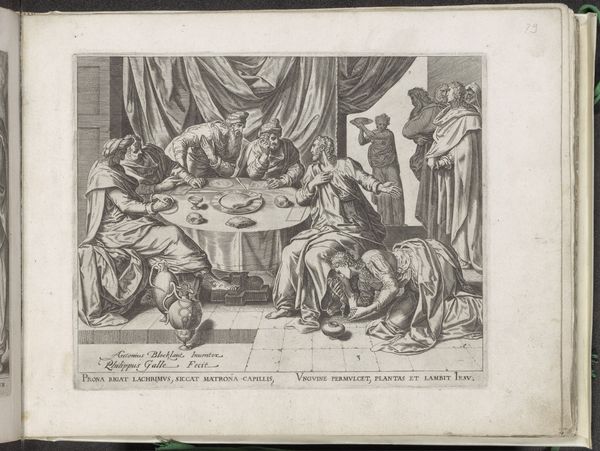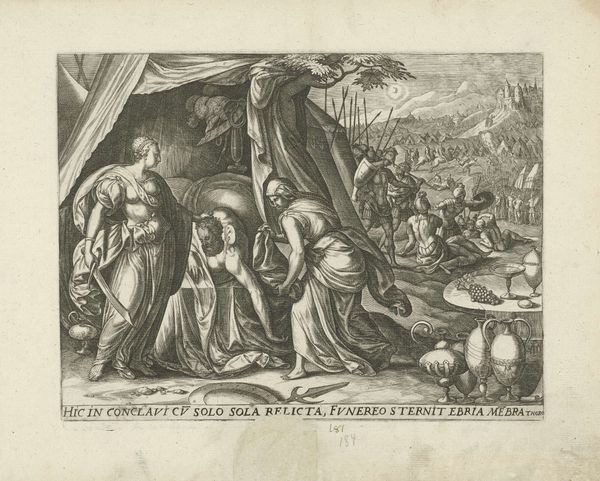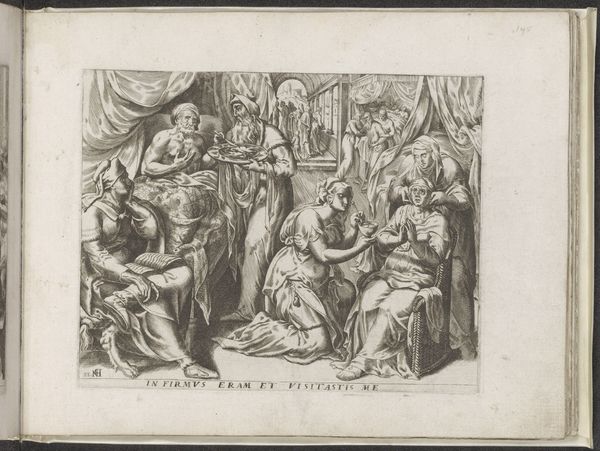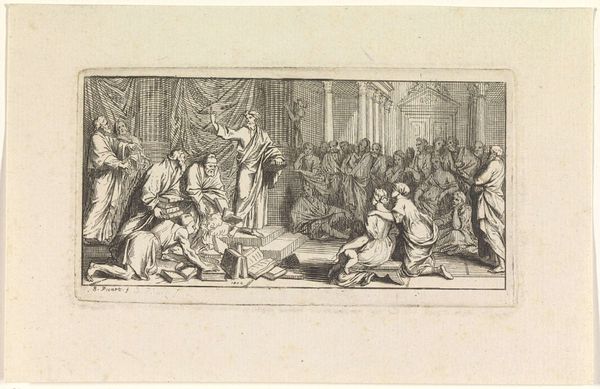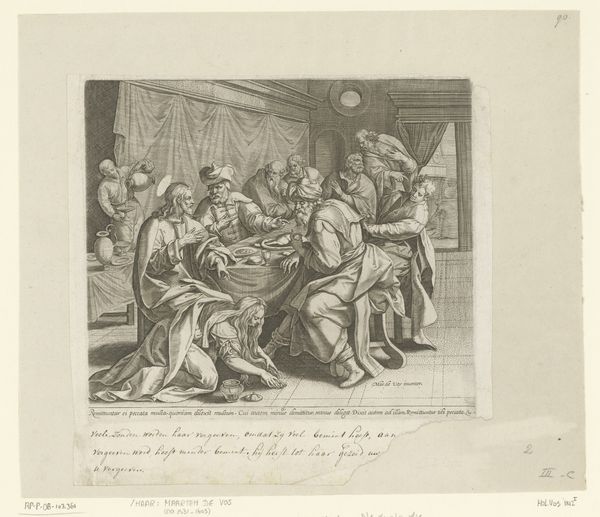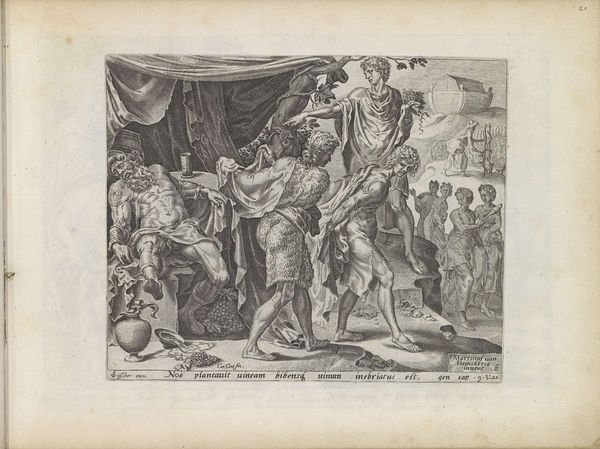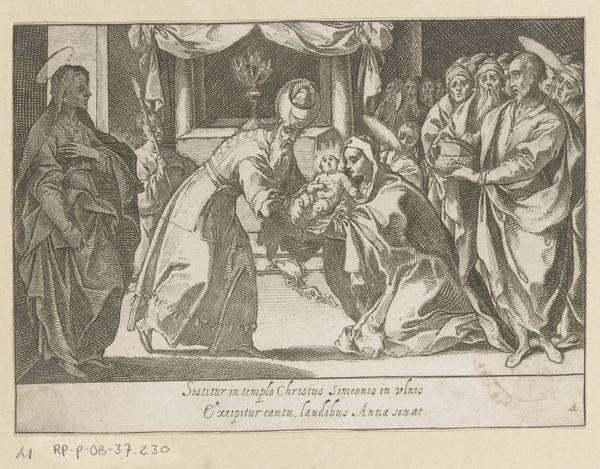
print, engraving
#
narrative-art
#
baroque
# print
#
figuration
#
islamic-art
#
history-painting
#
engraving
Dimensions: height 212 mm, width 258 mm
Copyright: Rijks Museum: Open Domain
Curator: This engraving, dating roughly from 1581 to 1633, is titled "Sterfbed van de rijke man." It’s currently held at the Rijksmuseum and attributed to Theodoor Galle. The primary medium, as you can see, is printmaking. Editor: My immediate impression is of intense drama, almost theatrical. The figures are arranged as if on a stage, with this powerful contrast between the earthly grief and a supernatural horror playing out simultaneously. It feels overwhelmingly moralistic, doesn’t it? Curator: Absolutely. Notice the incredibly fine lines achieved through engraving. Look closely at the rendering of fabrics and skin – the density of lines creates such a tangible sense of volume and texture. And then, observe how the figures in the foreground, the family perhaps, are placed relative to the bed and to the background that illustrates inferno? The artist obviously used labor and skills that are rarely associated to this style of artworks. Editor: The composition is fascinating. The dying man is caught between worlds: a bedside vigil with praying figures on one side and devils claiming his soul on the other. The presence of figures with what appears to be Ottoman-era turbans feels particularly jarring – who are these visitors, and how are we to interpret their presence in this scene of Christian moral reckoning? And those visual elements referring to a dramatic descent of people engulfed by flames... Is the "rich man" depicted condemned, as punishment of sins made during his lifetime? Curator: Good question. It points us toward a broader consumption of these kind of images within society and the means of their dissemination as commentary in their contemporary societies. You have all these religious symbols with others that indicate wealth and status, or perhaps different countries that he traded with in his lifetime. The production of such engravings wasn’t merely about art; it was about crafting narratives, social and political, in very meticulous material terms. Editor: Yes, precisely! These symbols speak volumes about the societal values, and perhaps anxieties, of the time. The way wealth is juxtaposed against mortality and spiritual consequences is stark. Galle utilizes a symbolic language of hell that probably had profound impact in the psyche of his contemporaries, maybe inciting different behaviours, or inspiring them. It’s a morality tale brought to life. Curator: This engraving pushes the boundaries of what "high art" was, through a material understanding. It’s thought-provoking how much this image prompts us to think about process and context beyond the image itself. Editor: Agreed. Seeing this work through both the lens of its material construction and its rich symbolic language helps us understand its enduring impact, even centuries later. It's really thought provoking how enduring these kind of engravings have been.
Comments
No comments
Be the first to comment and join the conversation on the ultimate creative platform.
